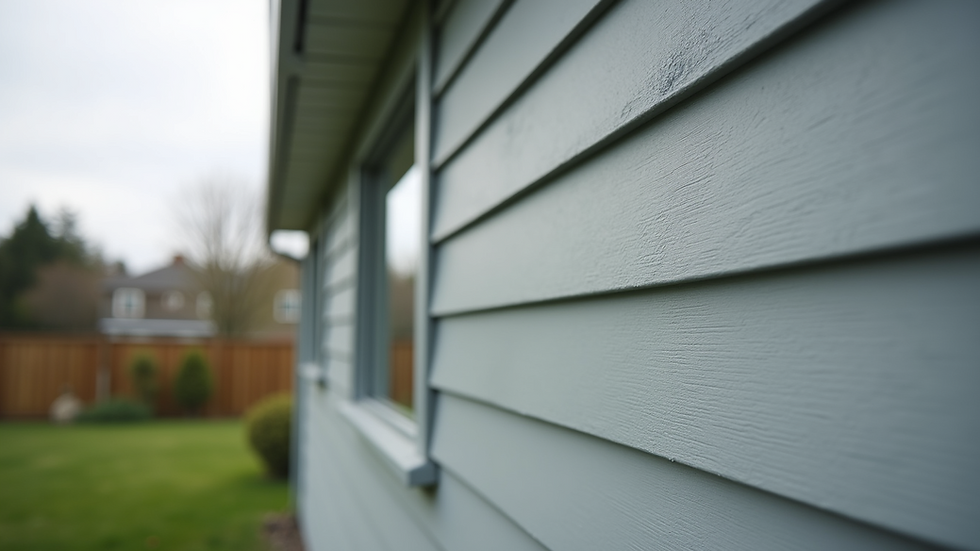Stucco Repair: A Comprehensive Guide to Restoring Your Exterior's Timeless Elegance
- Jose Gonzalez
- Feb 5, 2024
- 3 min read
Updated: Apr 14
Stucco, with its enduring charm and timeless appeal, is a popular choice for exterior finishes. However, like any material, stucco may require attention over time due to wear, weathering, or unforeseen damage. In this comprehensive guide, we'll delve into the world of stucco repair, offering insights, tips, and techniques to help you restore and maintain the elegance of your stucco-clad exterior.

Identifying Stucco Issues for Targeted Repair
Before diving into stucco repair, it's crucial to identify common issues affecting your exterior.
Common problems include:
Before listing your tips below, add one last sentence that sums up your paragraph or offers a smooth transition to your listicle.
Tip # 1 - Stucco Cracks
Hairline cracks or larger fissures can develop over time, compromising the integrity of the stucco.
Format each tip's title to H2 to keep your post neat.
Tip # 2 - Water Damage
Stucco is susceptible to water infiltration, leading to discoloration, mold growth, and potential structural damage.
"In a perfect world, eliminate the cause of the problem" - Mark with ThisOldHouse"
Tip # 3 - Efflorescence
The appearance of white, powdery deposits on the stucco surface indicates mineral migration and requires attention.
Tip # 4 - Staining
Stucco can stain due to various factors, including mold, mildew, or environmental pollutants.
Stucco Repair Steps:
Tip # 1 - Clean the Surface
Before starting any repairs, thoroughly clean the stucco surface. Remove dirt, debris, and any loose or damaged stucco using a stiff brush or pressure washer.
Tip # 2 - Repairing Cracks
For hairline cracks, a flexible, paintable caulk can be used. Deeper cracks may require a stucco patching compound. Apply the patch evenly, feathering the edges for a seamless blend.
Tip # 3 - Addressing Water Damage
Identify and fix the source of water infiltration, such as damaged flashing or improperly sealed joints. Once the underlying issue is resolved, repair the stucco by removing damaged portions and applying a waterproofing sealant.
Tip # 4 - Efflorescence Removal
Brush away efflorescence using a stiff brush. Address the root cause of the mineral migration, such as water intrusion, and apply a masonry sealer to prevent recurrence.
Tip # 5 - Stain Removal
Stain removal methods vary based on the type of stain. For organic stains like mold or mildew, a mixture of water and bleach may be effective. Consult with a professional for persistent or stubborn stains.
Tips for Successful Stucco Repair
Tip # 1 - Timely Repairs
Addressing stucco issues promptly prevents further damage and maintains the overall integrity of the exterior.
Tip # 2 - Quality Materials
Use high-quality stucco patching compounds, sealants, and primers to ensure durable and long-lasting repairs.
Tip # 3 - Proper Application
Follow manufacturer guidelines for product application. Properly prepare the stucco surface, apply products evenly, and feather edges for a seamless finish.
Tip # 4 - Professional Assistance
While minor repairs can be tackled by homeowners, complex issues or extensive damage may require professional assistance. Consult with experienced stucco contractors for major repairs.
Conclusion
Stucco repair is a crucial aspect of maintaining the timeless beauty and durability of this classic exterior finish. By identifying issues early, using quality materials, and following proper repair techniques, you can extend the life of your stucco and keep your home looking elegant for years to come. Whether you're tackling minor cracks or addressing more significant damage, investing time and care in stucco repair pays off in the long run, ensuring your home remains a showcase of enduring sophistication.




Comments